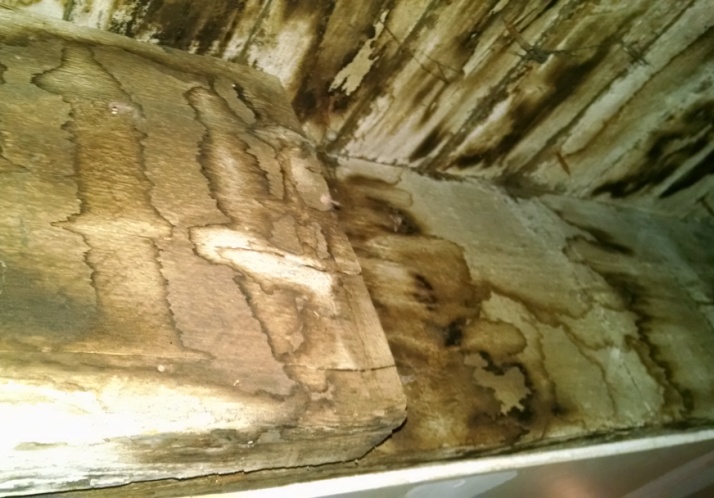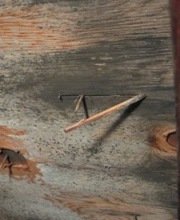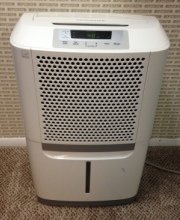Find a Mold Specialist Now
Click or Call, Toll-Free 24/7
Curvularia Mold
Curvularia has a downy or suede-like texture and may be a medium shade of brown to dark brown or nearly black in color. Most kinds of mold grow and spread quickly, but according to The University of Adelaide website, this particular strain of mold grows especially fast. By the time you realize you've got a mold problem, the problem might be widespread throughout much of your home.
Health Problems Associated with Curvularia
Like other kinds of mold, this strain of mold is associated with a number of health problems, some of them quite serious.
Sinusitis – This is commonly referred to as a sinus infection. The sinuses are air-filled cavities in the bony structure of the cheeks, on either side of the nose, behind the nose, behind the forehead, and behind the eyebrows. The sinuses can become infected with bacteria, viruses or fungi (such as mold). According to the American College of Allergy, Asthma and Immunology (ACAAI), symptoms of sinusitis include headache, facial pain, and nasal congestion. Chronic sinusitis is a fairly common symptoms of exposure to mold. In most cases, sinusitis is not too serious and is easily treated. In some cases, especially without treatment, the condition can become serious and the infection can spread to the facial bones or to the brain.
Keratitis – This is an infection of the eye, specifically of the cornea, the clear tissue that covers the pupil and the iris, or the colored part of the eye. It can be caused by bacteria, viruses or a parasite, as well as by fungi such as mold. When caused by mold, keratitis is usually treated by antifungal eyedrops and oral antifungal medication. If not treated promptly, the cornea may suffer lasting damage and permanent visual impairment or blindness may result. In that case, a corneal transplant may be needed in order to restore vision.
Endocarditis – This is an infection of the endocardium, the inner lining of the heart. The condition is most common in people who have heart defects of some sort, but it can occur in people with healthy hearts, as well. As you might imagine, it's a very serious condition. It can lead to stroke, heart failure, and damage to other organs, including damage to the kidneys and brain. Sometimes it can be treated with medication, but when endocarditis is caused by mold rather than by bacteria, open heart surgery is sometimes required. Permanent damage to the heart valves may occur even with medical treatment.
Peritonitis – This is an infection of the peritoneum, the lining of the abdominal cavity. It is a very serious condition and usually requires hospitalization. Sometimes it can be treated with medication, but other times surgery is necessary. Without prompt treatment, peritonitis is life-threatening.
Disseminated infection – This is an infection that enters the body in one place but then spreads throughout the entire body. Multiple organ systems can be affected. Without prompt treatment, the infection can become life-threatening.
 Mold on basement ceiling
Mold on basement ceilingHow Do You Know If It Is Curvularia?
Many times homeowners don't know what kind of mold they're dealing with. There are more than 300 different strains of mold found in homes in the U.S., many of which are some shade of brown in color. The Centers for Disease Control and Prevention states that in most cases, you don't really need to know what kind of mold is in your home because all kinds are potentially harmful and need to be removed.
If you are experiencing health problems you believe are related to mold exposure, ask your doctor if knowing the specific type of mold would make a difference in your treatment. Often it does not, but in some cases, it might.
If you want to know what kind of mold is in your home, you can have a professional come in and test the mold. There are do-it-yourself tests you can buy but those are not always accurate and many only test for a few of the most common types of mold (which probably won't include curvularia). If a professional tests your home for mold, the test should cover all types of mold and the professional will explain the results to you. You can read more about mold testing here.
Follow this link to find professionals in your area that can test your home for mold. After the mold has been removed from your home, the U.S. Environmental Protection Agency recommends having your home tested again, just to make sure all of the mold has been removed.
Return From Curvularia To Our Main Mold Types Page
Privacy Policy Terms and Conditions Accessibility Do Not Sell My Information Disclaimer Contact Us




